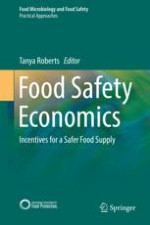2018 | OriginalPaper | Buchkapitel
12. Sweden Led Salmonella Control in Broilers: Which Countries Are Following?
verfasst von : Tanya Roberts, Johan Lindblad
Erschienen in: Food Safety Economics
Aktivieren Sie unsere intelligente Suche, um passende Fachinhalte oder Patente zu finden.
Wählen Sie Textabschnitte aus um mit Künstlicher Intelligenz passenden Patente zu finden. powered by
Markieren Sie Textabschnitte, um KI-gestützt weitere passende Inhalte zu finden. powered by
